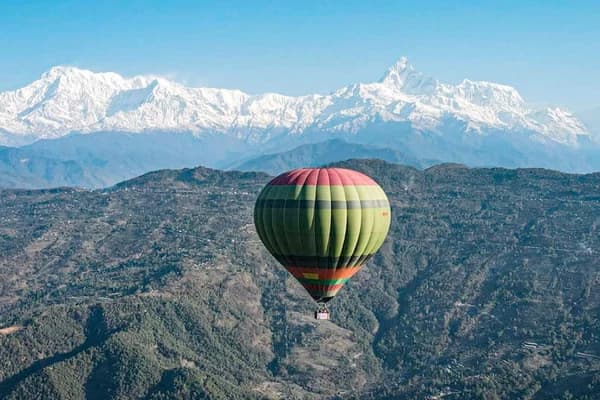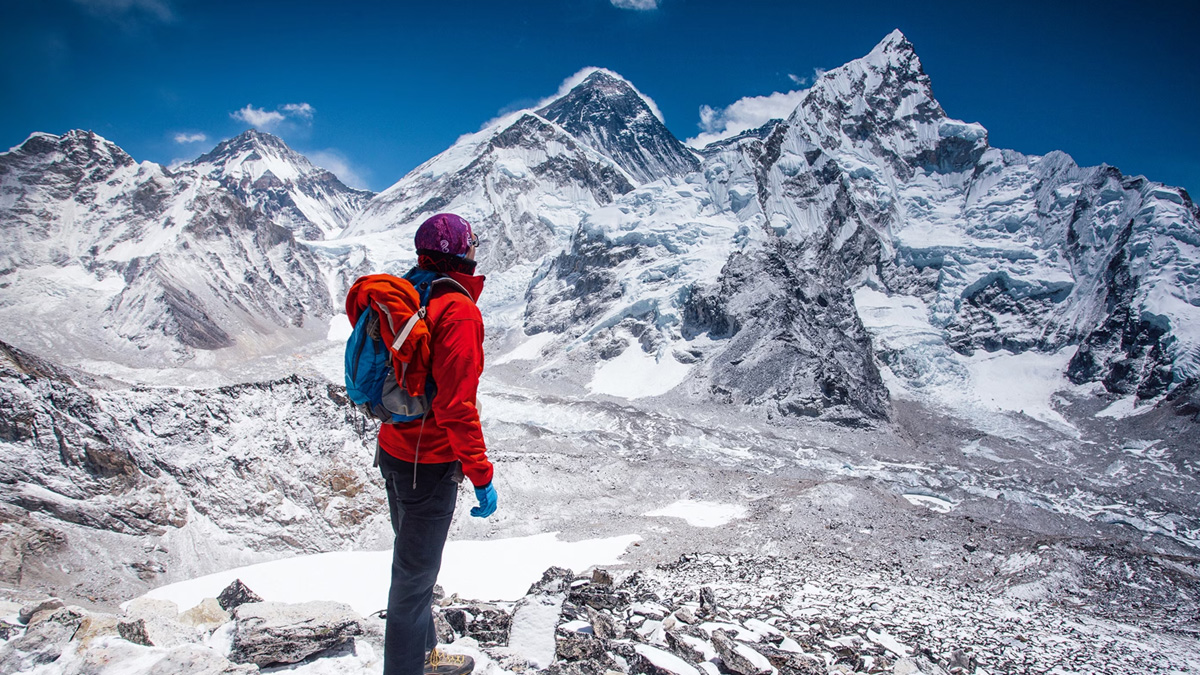 Everest Base Camp Trek Nepal Side vs Tibet Side – Key Differences Explained
Everest Base Camp Trek Nepal Side vs Tibet Side – Key Differences Explained
Trekking to Everest Base Camp can be experienced from two distinct sides: Nepal (South Base Camp) and Tibet (North Base Camp). Both offer incredible Himalayan scenery, yet the journey, culture, altitude challenges, and accessibility differ greatly.
Nepal Side (South EBC Trek)
The Everest Base Camp Trek from Nepal is a classic multi-day hiking adventure. It begins with a scenic flight to Luklaand follows the legendary Khumbu Valley through Sherpa villages like Namche Bazaar, Tengboche, Dingboche, and Gorak Shep. The route is rich in Buddhist culture, monasteries, yak caravans, and close-up views of Everest, Lhotse, and Ama Dablam. Trekkers walk up to 5,364m, with acclimatization days recommended. Nepal’s route is more immersive, physically engaging, and full of trekking lodges and local interactions.
Tibet Side (North EBC)
The Tibet Everest Base Camp is reached mostly by road from Lhasa, offering a more gradual scenic drive across the Tibetan Plateau. The landscape is wider, drier, wind-swept, and culturally shaped by Tibetan Buddhism. However, trekking is minimal. Travelers visit Rongbuk Monastery and can view Everest’s magnificent north face from a distance. Altitude is higher earlier, requiring careful adaptation.
Why Everest Base Camp Trek from Nepal Side is World-Famous?
Trekking to Everest Base Camp from Nepal is a dream journey for explorers seeking authentic Himalayan adventure, cultural immersion, and breathtaking mountain scenery. The Nepal side of Mount Everest, also known as Sagarmatha, offers the classic route followed by legendary climbers like Sir Edmund Hillary and Tenzing Norgay Sherpa. This historic connection makes it the most popular and meaningful way to reach Everest Base Camp.
The trek begins with a thrilling flight to Lukla, leading you through iconic Sherpa villages like Namche Bazaar, Tengboche, and Dingboche. Here, trekkers experience warm Sherpa hospitality, ancient monasteries, prayer wheels, and colorful Tibetan-influenced traditions that bring spiritual depth to the journey.
Along the trail, majestic peaks like Ama Dablam, Lhotse, Nuptse, and Everest itself create spectacular views, especially from Kala Patthar, the best viewpoint for sunrise over Everest. The well-established tea house accommodation, experienced guides, and safe trekking infrastructure make the Nepal route more accessible and comfortable.
Choosing the Nepal side means walking the original Everest trekking trail, enjoying unrivaled landscapes, rich mountain culture, and the true essence of Himalayan adventure—making Everest Base Camp from Nepal not just a trek, but a once-in-a-lifetime achievement.
Essential Information Needed to Trek Everest Base Camp from Nepal Side
To trek Everest Base Camp from the Nepal side, travelers need key details for a safe and successful Himalayan journey. Plan your EBC Trek with proper trekking permits: Sagarmatha National Park Permit and Khumbu Pasang Lhamu Rural Municipality Permit. Ensure good physical fitness and practice altitude preparation to avoid Acute Mountain Sickness. The best seasons are Spring (March–May) and Autumn (September–November) for clear skies and stable weather. Most trekkers fly from Kathmandu to Lukla, the gateway to the trail leading through Namche Bazaar, Tengboche, Dingboche, and Gorakshep. Pack quality trekking gear including layered clothing, waterproof boots, warm jackets, and sleeping bags. Book accommodations in tea houses and consider hiring a licensed trekking guide or porter for safety and cultural insights. Comprehensive travel insurance with high-altitude coverage is strongly recommended. This preparation ensures a memorable Everest Base Camp trekking experience.
Everest Base Camp Trek Itinerary from Nepal Side (Detailed Guide)
The Everest Base Camp Trek itinerary from the Nepal side typically spans 12–14 days, starting with a scenic flight from Kathmandu to Lukla. This iconic trekking route passes through Sherpa villages, Buddhist monasteries, Sagarmatha National Park, and panoramic Himalayan viewpoints. The journey follows: Lukla to Phakding, then to Namche Bazaar for acclimatization, onward to Tengboche, Dingboche, Lobuche, Gorakshep and finally Everest Base Camp (5,364m). A sunrise hike to Kala Patthar (5,545m) offers the best Everest viewpoint. After exploring, trekkers return via the same trail to Lukla and fly back to Kathmandu. This itinerary ensures proper altitude adjustment, safe trekking pace, and unforgettable Himalayan scenery. The EBC trek is suitable for moderately fit adventurers seeking a challenging yet rewarding high-altitude experience in Nepal’s legendary Everest Region.
Trek to Everest Base Camp & Return by Helicopter – Best Himalayan Adventure Option
Yes, you can trek up to Everest Base Camp and return by helicopter, making it one of the most popular and time-saving EBC trek options. This hybrid journey is ideal for travelers who want the full trekking experience but wish to avoid the long return walk. The adventure starts with a scenic flight to Lukla, followed by a classic trail through Phakding, Namche Bazaar, Tengboche, Dingboche, Lobuche, and finally Everest Base Camp and Kala Patthar for the iconic sunrise view of Mount Everest. After enjoying the breathtaking panorama, you can hop on a helicopter from Gorakshep or Kala Patthar and fly back to Lukla or Kathmandu.
This option is perfect during short holidays, reduces physical strain, and ensures a safer descent, especially for those concerned about altitude fatigue. The Everest Base Camp trek with helicopter return offers 360° Himalayan views, speed, and comfort. It’s a great blend of trekking adventure, luxury, and efficiency—ideal for trekkers seeking the best EBC experience in limited time.
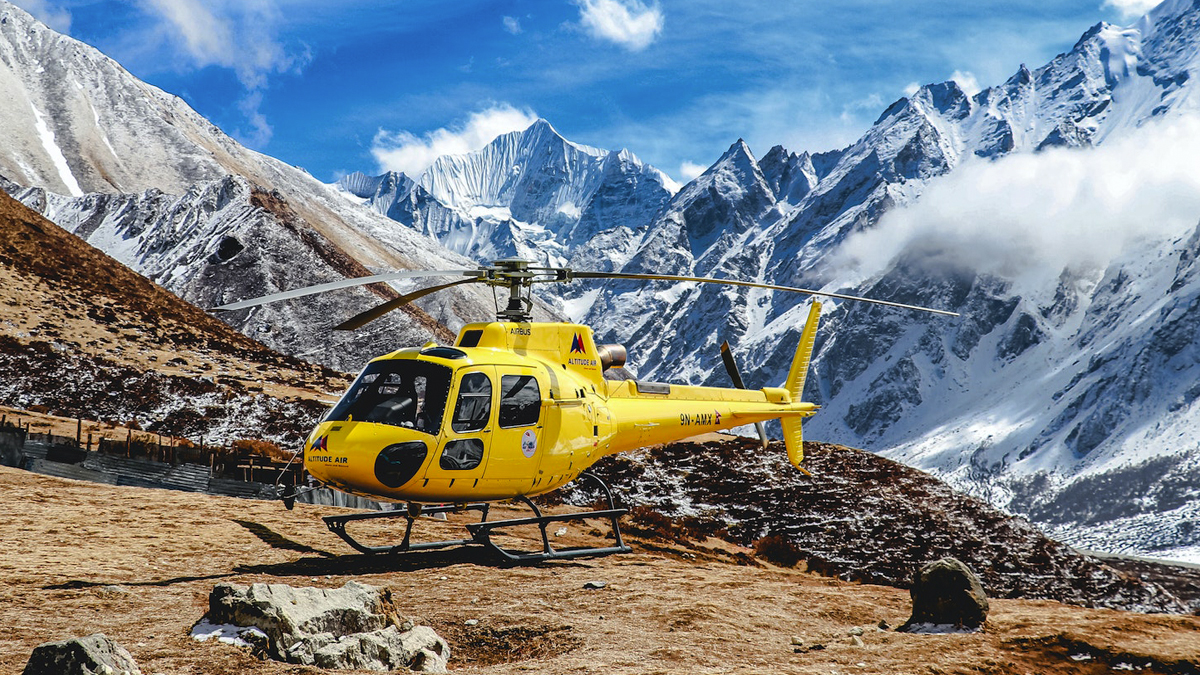
Helicopter Sightseeing to Everest Base Camp – A Quick Luxury Himalayan Experience
Yes, you can explore Everest Base Camp by helicopter, making it the fastest and most scenic way to witness Mount Everest without trekking. The Everest Base Camp Helicopter Tour is ideal for travelers with limited time or those who prefer comfort over a challenging multi-day hike. The flight begins from Kathmandu or Lukla, soaring above the Khumbu Valley, Namche Bazaar, Sagarmatha National Park, and stunning mountain glaciers. The helicopter lands at Kala Patthar (5,545m), one of the best viewpoints for close-up panoramas of Mt. Everest (8,848.86m), Lhotse, Nuptse, and Ama Dablam. Guests also enjoy a breakfast stop at the famous Everest View Hotel with breathtaking Himalayan landscapes. This tour is safe, time-saving, and offers unforgettable aerial photography. Perfect for families, honeymooners, senior travelers, and time-bound adventurers seeking the world’s highest mountain in just one day.

Can We Trek Everest Base Camp with Family and Kids?
Trekking to Everest Base Camp with family and kids is absolutely possible, but it requires careful planning, the right pace, and proper acclimatization. This Himalayan journey is not just an adventure; it becomes a meaningful family experience filled with culture, nature, and unforgettable views of the world’s highest peaks.
Many families have successfully completed the Everest Base Camp trekking route with children as young as 8–12 years old. The key is to choose the best itinerary with slow elevation gain, allowing the body to adjust to high altitude. Kids often adapt well when trekking gradually, staying hydrated, and resting properly. Hiring a professional licensed trekking guide helps ensure safety, support, and proper guidance on trail decisions.
The trail takes you through charming Sherpa villages, suspension bridges, yak caravans, Buddhist monasteries, and panoramic viewpoints like Namche Bazaar and Tengboche. Families can enjoy educational moments—learning about local culture, geography, wildlife, and mountain lifestyle.
However, this trek should not be rushed. Weather conditions, physical fitness, and altitude sickness awareness are important factors. Shorter hikes or acclimatization days are recommended. If children show discomfort, it’s essential to descend immediately.
Choose family-friendly Everest Base Camp trek packages, comfortable lodges, and flexible schedules. With the right preparation, supportive planning, and a positive mindset, trekking Everest Base Camp with kids becomes a life-changing family adventure filled with shared memories and Himalayan wonder.
Emergency Rescue in Everest Region During Bad Weather – What Trekkers Should Know?
During Everest Base Camp Trek or any Himalayan adventure, weather can change rapidly, sometimes grounding helicopters and making rescue challenging. When bad weather prevents immediate helicopter evacuation, rescue teams follow a well-coordinated safety protocol. First, the trekking guide or team leader communicates with local rescue networks, Himalayan Rescue Association (HRA), and your travel insurance provider. If helicopter rescue is delayed due to snow, fog, or strong winds, trekkers are moved safely to the nearest lower altitude lodge or medical post to reduce risk of Acute Mountain Sickness (AMS), HAPE, or HACE.
In many Everest trekking routes, trained guides use portable oxygen cylinders, oximeter monitoring, Diamox support, and emergency communication radios. Tea houses in places like Dingboche, Pheriche, and Lukla often serve as temporary medical shelters. Once weather improves—even for a short window—helicopters are dispatched from Lukla or Kathmandu for airlift to Lukla Clinic or Kathmandu hospitals. Traveling with proper high-altitude insurance coverage, a licensed trekking company, and guides familiar with evacuation routes ensures faster and safer rescue during severe weather conditions in Everest region.
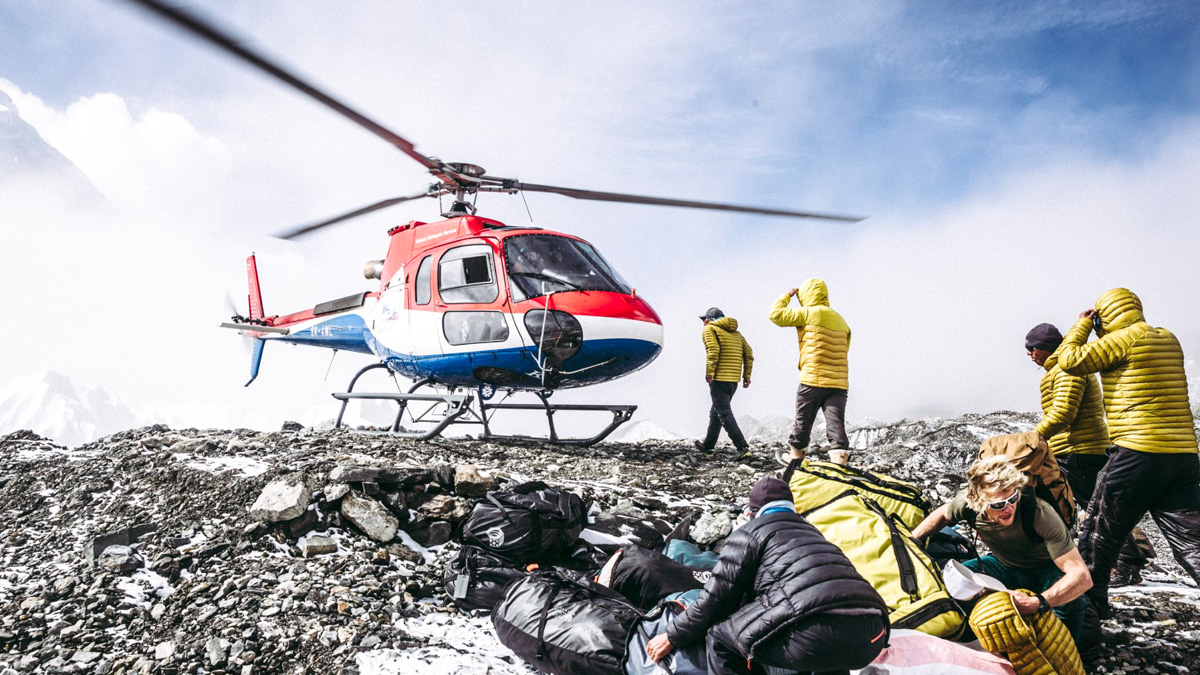
Weather Conditions in Everest Region – What to Expect Throughout the Year?
Weather in the Everest region varies strongly with altitude and season, creating unique conditions for trekkers. Normally, Everest Base Camp weather is cold, crisp, and dry, especially at higher elevations above 4,000m. During the spring (March–May), temperatures become mild with clear skies and blooming rhododendrons, making it one of the best seasons for the Everest Base Camp Trek. Daytime temperatures around Tengboche or Dingboche average 5°C to 15°C, but nights remain cold.
In autumn (September–November), the Everest region offers stable weather, sharp mountain visibility, and less humidity. This season is popular for climbing and trekking because of its bright skies and pleasant temperatures. Winter (December–February) brings freezing temperatures, strong winds, and heavy snowfall, especially above Gorak Shep and Kala Patthar. Nights can drop to -20°C or lower.
The monsoon (June–August) brings rain below 3,500m and cloudy views, but upper valleys remain somewhat dry due to the Himalayan rain shadow effect. However, trails may become slippery and prone to landslides.
Overall, travelers should expect rapid weather changes, intense sunlight during the day, and cold nights. Layered clothing, good trekking gear, and awareness of altitude effects are essential when exploring the Everest trekking region.
Conclusion
The Everest Base Camp Trek from the Nepal side offers an authentic Himalayan adventure filled with culture, iconic mountain views, and meaningful Sherpa hospitality. Trekking through the Khumbu Valley to Everest Base Camp and Kala Patthar provides a once-in-a-lifetime experience. With proper preparation, acclimatization, and the right support, this journey becomes a rewarding achievement and a deeply memorable exploration of the world’s highest peaks.




 Everest Base Camp Trek Nepal Side vs Tibet Side – Key Differences Explained
Everest Base Camp Trek Nepal Side vs Tibet Side – Key Differences Explained


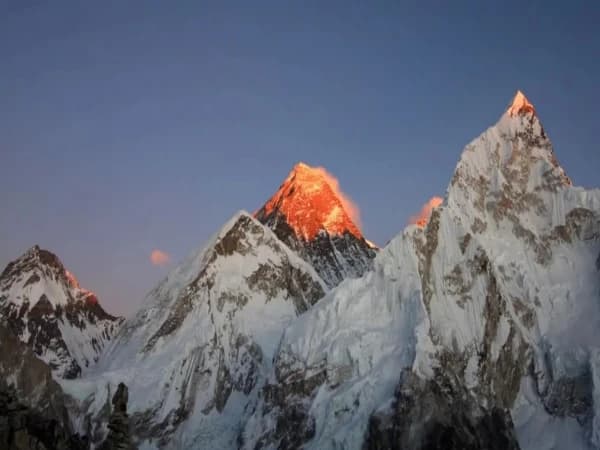
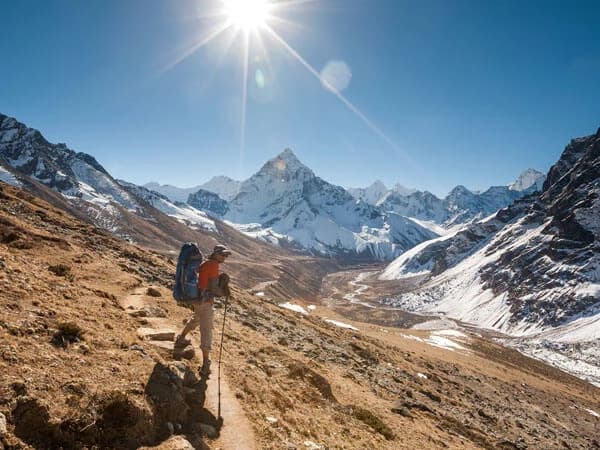
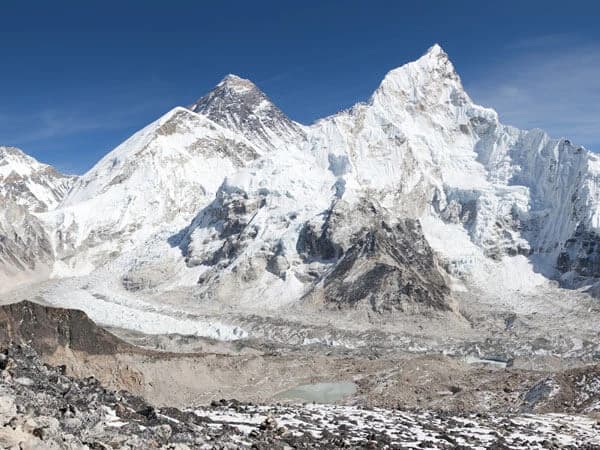
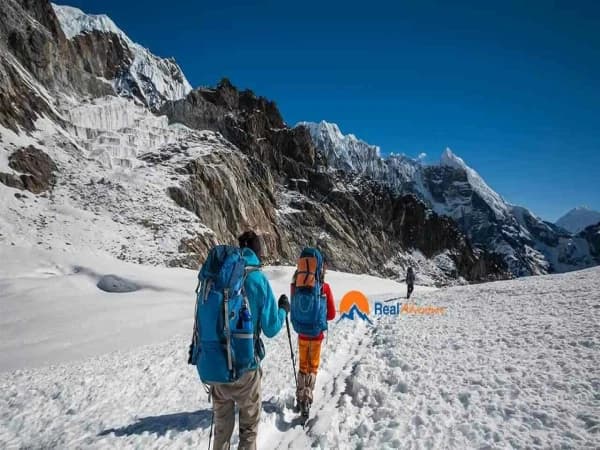
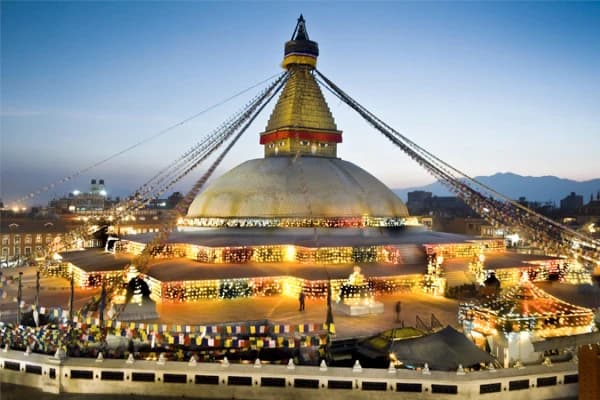
-(5).webp&w=1200&q=75&dpl=dpl_GDHRyonDC5uCJ5MtiFRDmK8W8YHj)
